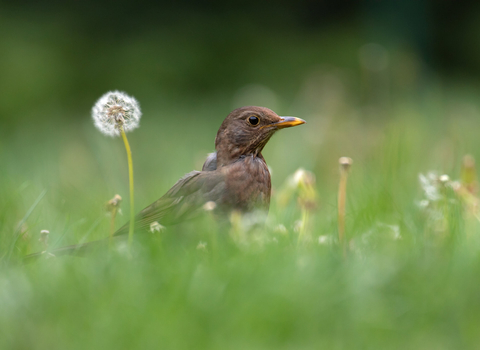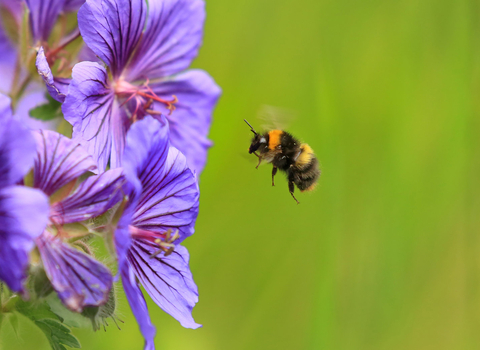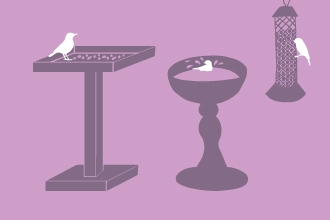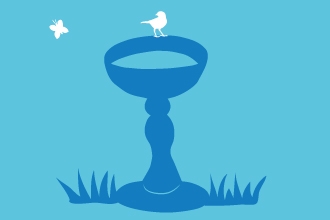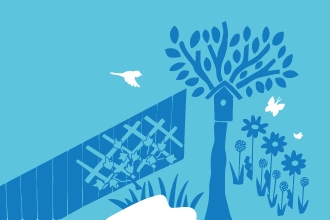
How to plant a tree
Planting trees is a great way to enhance your garden – trees offer shade, a natural windbreak and a little more privacy. It is also a great way to attract wildlife into your garden, giving them space to breed, shelter and hibernate. Trees provide an important food source for many animals: their spring blossom offers a huge amount of nectar, while their autumnal bounty of nuts gives many a feast to hoard over winter.
Trees have a vital role to play in protecting the environment. Six native trees will absorb and store about a tonne of carbon dioxide over their lifetimes. Planting trees also helps to guard against soil erosion, reduces the effects of flooding, and absorbs air pollution.
If you're a community group or an individual planning to plant a number of trees, it's really important to follow the "right tree, right place" principles. We've information on this at the bottom of this page.
Plant a tree, not just for yourself but for future generations
Choosing your tree
So, you've decided to plant a tree? Great! The next step is to consider carefully what kind of tree is best for your situation.
What kind of tree should I plant?
Native trees – trees that originally come from this country – are best for helping native insects and animals to thrive. Ideally, a native tree that has been grown from local stock will be best adapted to your local conditions (check with your local nurseries for specific stock). Choosing trees of certified UK provenance (i.e. grown in this country from locally-sourced seed) also avoids importing tree diseases.
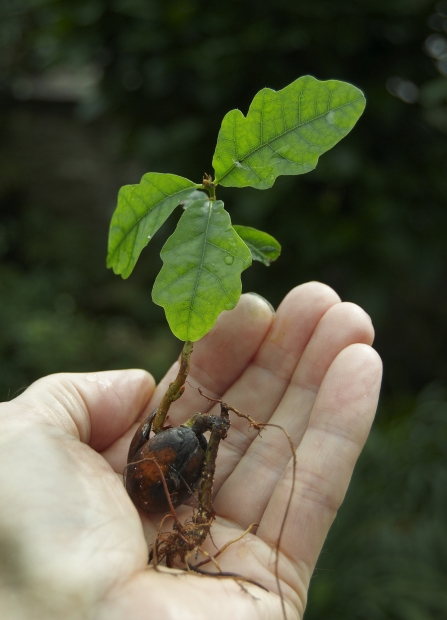
©Alan Price/Gatehouse Studio
Suggested species:
- Alder - Alnus glutinosa
- Blackthorn - Prunus spinosa
- Common Beech - Fagus sylvatica
- Common Hawthorn - Crataegus monogyna
- Crab Apple - Malus sylvestris
- Elder - Sambucus nigra
- English Oak - Quercus robur
- Field Maple - Acer campestre
- Goat Willow - Salix caprea
- Hazel - Corylus avellana
- Holly - Ilex aquifolium
- Rowan - Sorbus aucuparia
- Silver Birch - Betula pendula
- Wayfaring-tree - Viburnum lantana
- Wild Cherry - Prunus avium
How big will it get?
Some trees are small enough to be grown in containers, others not so small. Make sure you know exactly how big to expect your tree to grow, and how far the canopy will spread, so that you can pick the right one for your space. You should really only grow big trees like English oak, common beech and alder if you have a very big garden.
Where should I plant it?
Take care when planting near a house or other structures. As a general rule, you should plant the tree at least its mature height away from the nearest building. Be careful with this as the root systems of some larger trees, like oak, can cause subsidence and damage drains as they grow, so make sure to think ahead. If your tree causes damage to someone else’s property, you will be liable for damages! If you are considering planting trees outside of your garden, follow our 'right tree, right place' principles further down this page.
When should I plant it?
The best time of year to plant a tree is when the roots are dormant as they are less easily disturbed by the moving process: typically, from mid-November to late March. Buy a seedling between 60-90 cm tall (a 'whip') for the quickest growth rates. Once you have your seedling, you're ready to get started!
Step-by-step planting guide:
Step 1
Make sure the roots are submerged in a bucket of water for 2 hours before planting. Exposed roots don’t do well – the root hairs dry easily and quickly die.
Step 2
Dig a hole: it should be at least double the width of the root ball. Keep the topsoil in a separate pile, if you can, and mix it with some compost. Break up the soil in the bottom of the hole. Trees over 1.5 m tall (or spindly or exposed trees) will need a little support – pop a metre-long stake firmly in the ground next to where you're planting the tree, on the side that will be facing the wind.
Step 3
Place your tree in the centre of the hole and spread the roots, making sure that it's deep enough that the soil lines up with the soil mark on the stem (this line shows where the stem ends and the roots begin).
Step 4
Spread the soil mix carefully around the roots, gently shaking the tree to make sure that the soil is in contact with the roots. Compact the soil around the tree and gently tug it to make sure it's secure. Water generously to settle the soil around the roots and tether the tree to the stake if you're using one.
Step 5
Don't forget about your tree! The first weeks and couple of years after planting are especially important. Water daily for the first two weeks, and then weekly for the first year while the tree is active (has its leaves). Regularly check the soil is firm around the tree and tear off any suckers (growths rising from the roots). Remember to loosen tethers as your tree grows, readjusting as necessary to stop ties from biting into the stem. The stake can be removed after 3 years.
Right tree, right place
Planting trees can be brilliant, but it's really important to ensure the right site is chosen, and the right trees. Before starting your tree planting project, seek expert local guidance to make sure the site you've chosen is suitable for tree planting.
If the area is grassland rich in wildflowers, a coastal habitat, moorland or is wet and marshy, avoid planting trees. These habitats are already wonderful in their own rights - they store carbon and are important for many species - and they may also have a wildlife or historic designation.
The most suitable sites for tree planting are likely to be arable or grassland areas with few existing wildflowers, plants for fungi. In these cases, tree planting is often the best natural solution to storing carbon. Once you've chosen the best site for your project, ensure to follow the guidelines above when choosing and planting your trees!

